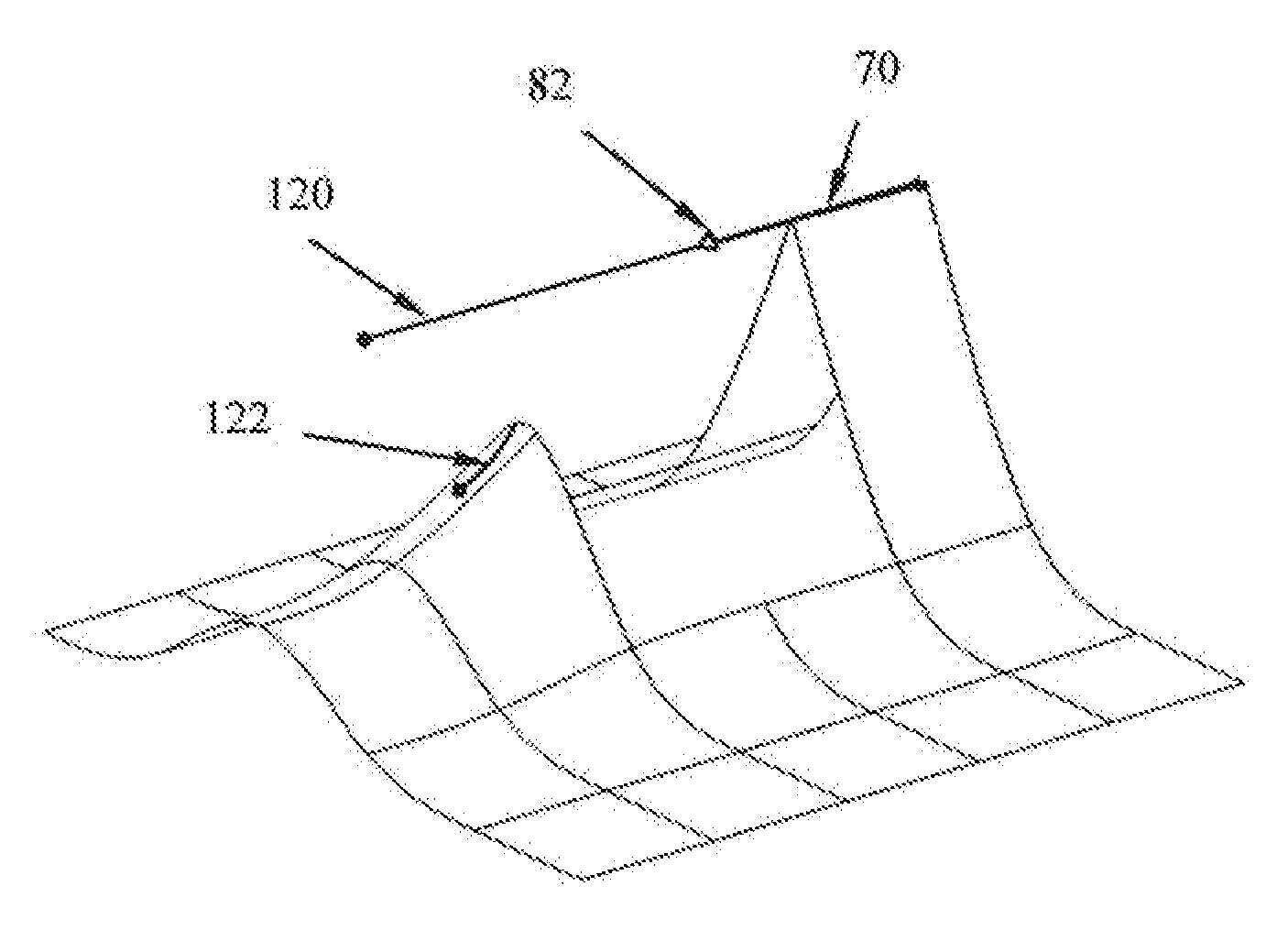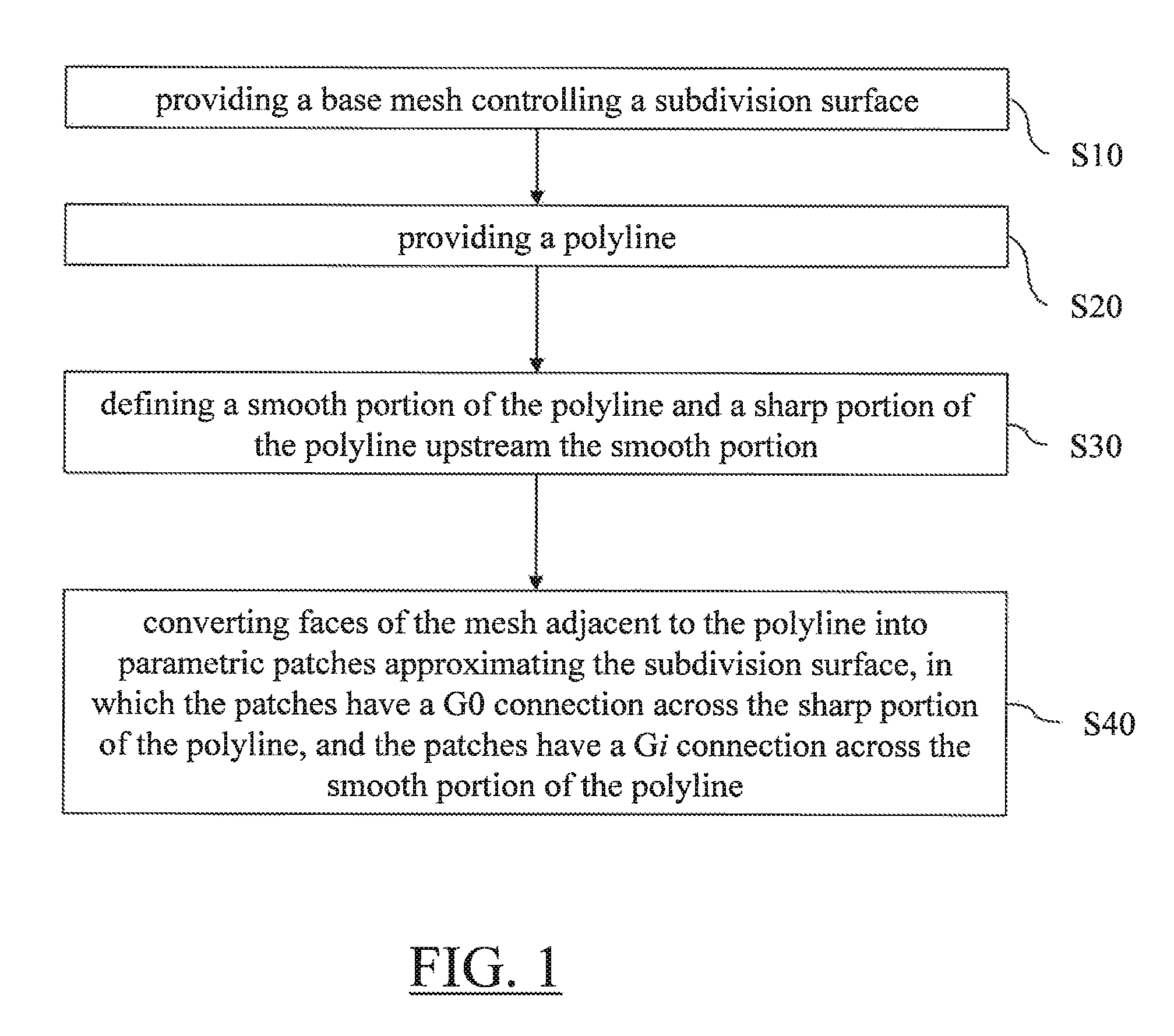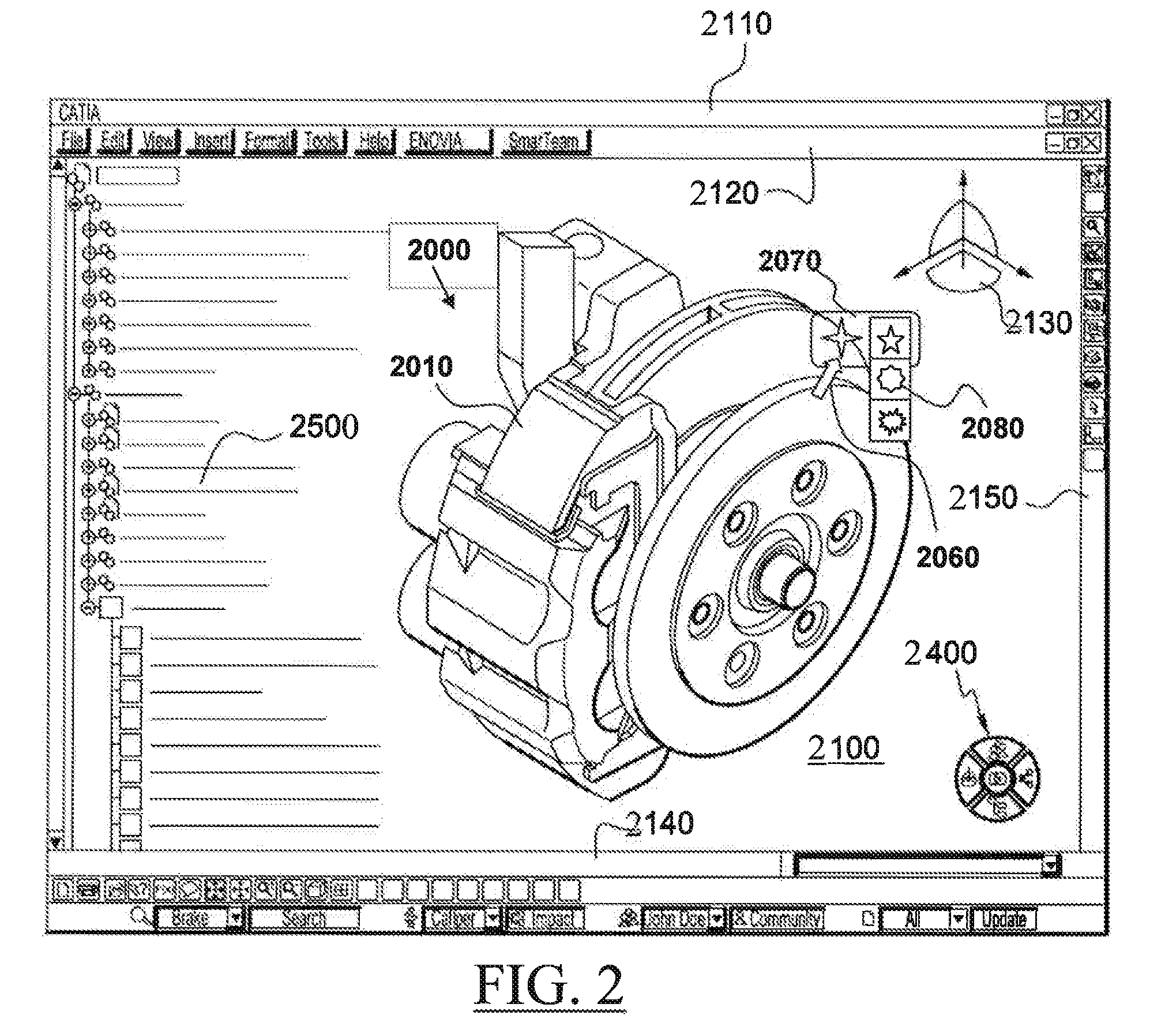Designing a 3D modeled object
a 3d model and object technology, applied in the field of computer programs and systems, can solve the problems of inability to adjust the base mesh in order, the character line shape and its transition zone is not satisfactory, and the transition zone must be created again on the modified surfa
- Summary
- Abstract
- Description
- Claims
- Application Information
AI Technical Summary
Benefits of technology
Problems solved by technology
Method used
Image
Examples
Embodiment Construction
[0040]FIG. 1 shows a flowchart of an example of a computer-implemented method for designing a 3D modeled object. The method comprises the step of providing S10 a base mesh controlling a subdivision surface. The subdivision surface models the 3D modeled object. The method also comprises the step of providing S20 a polyline. A polyline consists of connected edges of the base mesh. The method also comprises the step of defining S30 a smooth portion of the polyline and a sharp portion of the polyline. The smooth portion comprises an extremity of the polyline. The sharp portion is upstream the smooth portion. The method then comprises the step of converting S40 faces of the mesh, which are adjacent to the polyline, into parametric patches. The patches approximate the subdivision surface. The patches have a G0 connection across the sharp portion of the polyline. The patches have a Gi connection across the smooth portion of the polyline, where i is an integer higher or equal to 1 (e.g. i=2...
PUM
 Login to View More
Login to View More Abstract
Description
Claims
Application Information
 Login to View More
Login to View More - R&D
- Intellectual Property
- Life Sciences
- Materials
- Tech Scout
- Unparalleled Data Quality
- Higher Quality Content
- 60% Fewer Hallucinations
Browse by: Latest US Patents, China's latest patents, Technical Efficacy Thesaurus, Application Domain, Technology Topic, Popular Technical Reports.
© 2025 PatSnap. All rights reserved.Legal|Privacy policy|Modern Slavery Act Transparency Statement|Sitemap|About US| Contact US: help@patsnap.com



